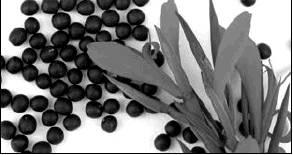Canna indica – Food, jewelry and ammo
Backyard Horticulture
Canna indica, canna, canna lily, achira, or Indian shot is not a true lily but just resembles one. It’s in the Cannaceae family and Canna is its only genus and means reed. There are several Canna species, Canna spp., cultivars, and varieties. Each stem is a central stalk usually 4 to 6 feet tall. It has 10 to 12 leaves arranged alternately or spirally. It comes from underground spreading rhizomes, up to 2 feet long, that can make thickets, crowding out other plants. In some countries the plant is invasive. Leaves can be 2 to 6 inches wide and 3 feet long. Leaf color may be shades of green, purple-red, and variegated with those colors and maybe some yellow. They can be bronze and almost chocolate. Flowers have 3 petals and 3 fused petal-like structures, each of different lengths.
Fruit may be green, brown, or red but there isn’t much to the fruit except a lot of seeds which are very hard. They can remain viable for hundreds of years. In 1968 archeologists found ancient Canna spp. seeds at a site in Argentina. Carbon dating set their age at about 550 years. When planted the seeds produced plants.
A common name for canna is Indian shot. Wikipedia, en.wikipedia.org, has an explanation. “The seeds are small, globular, black pellets, hard and dense enough to sink in water. They resemble shotgun pellets giving rise to the plant’s common name of Indian shot. The seeds are hard enough to shoot through wood and still survive and later germinate. According to the BBC ‘The story goes that during the Indian Mutiny of the 19th century, soldiers used the seeds of a Canna indica when they ran out of bullets.’”
The entire Canna spp. plant is edible, usually cooked. Leaves are used to wrap food such as tamales. Rhizome starch granules of C. indica have the largest known starch grains of any flowering plant. It’s easily digested, sweet when cooked, and can be used as baby food. It is fermented to make alcohol. Traditional medicine systems have used the plant to treat “women’s issues”. The plant is in the Food and Drug Administration Poisonous Plant Database at fda.gov.
The plant is used for weaving, fiber, basketry, paper making and purple dye. Smoke from the burning leaves repels insects. The seeds, in addition to ammunition, are used to make jewelry, rosaries, baby rattles, and musical instruments.
In 1893 the Chicago World’s Fair was decorated with plants including 78 beds of 26 Canna spp. varieties which made a big impression. A National Park Service, npgallery.nps.gov , document says the display “produced an unprecedented awakening of the general public’s interest in landscape design.” The title is “The Historic Designed Landscapes of Syracuse, New York”.
Today Canna spp. is used in bioremediation to remove toxic substances. Drought-tolerant, it is also a popular xeriscaping plant. Xeriscaping is the process of landscaping that reduces or eliminates the need for supplemental water from irrigation.


